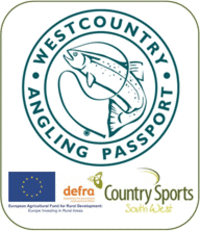Many thanks to The Media Workshop for facilitating this camera's location and to The Westcountry Rivers Trust for capitally funding its installation. The River Dart originates from two distinct branches, namely the East Dart and West Dart, which converge at Dartmeet. These river paths offer captivating opportunities for picturesque walks and are adorned with several charming waterfalls. Numerous clapper bridges, particularly the ones at the hamlet of Postbridge, cross the rivers. Moving away from the moor, the Dart flows in a southerly direction, passing by Buckfast Abbey and traversing the towns of Buckfastleigh, Dartington, and Totnes. At Totnes, where a seventeenth-century weir (rebuilt in the 1960s) is located, the river becomes tidal, and there are no bridges downstream from the town. The River Dart holds significant folklore within Dartmoor, where it is both revered and feared. The waters have a tendency to rise unexpectedly after heavy rainfall on the moors, amplifying the perils posed by its rapids and strong currents. This has given rise to the couplet: "River of Dart, Oh River of Dart! Every year thou claimest a heart."Most of the hydronyms in England have their origins in the Brythonic language, and the names of the River Dart can be traced back to an original Celtic etymology. As the lower stretches of the river are still adorned with ancient oak woodlands, it is widely accepted that the first element, *Dar-, signifies oak (derow in Welsh). However, the second element, indicated by the hard consonantal ending of Dart, is less certain. Various etymologies have been proposed, including associations with Darwent/Derventio (Sacred place of Oak) or Darnant/Darant (Oak stream).The Ravenna Cosmography documents several Latinized names for the area, and Devionisso Statio and Deventiasteno may represent corrupted forms of a Statio (Station) on a river named Derventio. While the name Derventio is not otherwise attested for the River Dart, it is a recognized etymology found in other locations throughout Britain, such as the River Darent, Derwentwater, and several rivers named Derwent. Anna Eliza Bray noted that a version of the name, Darant, was still commonly used as late as 1832.Historically, Buckfastleigh has developed as a mill town known for its woolen mills, corn and paper mills, and a tannery, all supported by the rivers Dart, Mardle, and the Dean Burn. Water, as an essential natural resource, played a vital role in the manufacturing of wool and other products. The town itself has medieval origins, which are still evident in its original layout, particularly in Fore Street. By the seventeenth century, many properties had been rebuilt, but remnants of the medieval layout remain visible today.The name "Buckfast" means "stronghold," traditionally referring to a place where deer and buck were held, while "Leigh" would have denoted the pasture belonging to Buckfast. Hence, the name signifies deer held in a pasture (buck-fast-leigh). Buckfast likely predates Buckfastleigh, as it is mentioned in the Domesday Book, and in 1018, a Benedictine Abbey was founded and endorsed by King Canute at Buckfast.The town center of Buckfastleigh predominantly features buildings from the late eighteenth to early twentieth century, displaying an interesting collection of private dwellings, commercial and retail properties, and public houses that retain many original features, styles, and character. During the first half of the twentieth century, the town center flourished as a self-sufficient community with locally-based employment. The Buckfastleigh Urban District Council initiated a substantial building program of local authority housing in the 1920s, expanding the town to the southwest and northwest. Census data reveals a population of 1,525 in 1801 and 2,781 in 1901.The Hamlyn family, original owners of the woolen mills until 1920, were prominent benefactors of the town. Together with other philanthropists, they erected new cottages. In 1887, they played a significant role in the construction of a new Town Hall and community building to commemorate the Golden Jubilee of Queen Victoria. Land was also made available for additional public amenities, including Victoria Park, tennis courts, and a swimming pool. The new primary school was built in 1875, and the railway line from Buckfastleigh and Ashburton to Totnes was opened.
The Farson streaming webcam is strategically positioned at this location on the River Dart in Buckfastleigh, next to the A384, to monitor river levels for fishing, canoeing, kayaking, and potential flooding.




